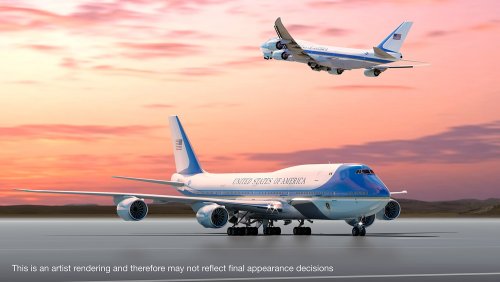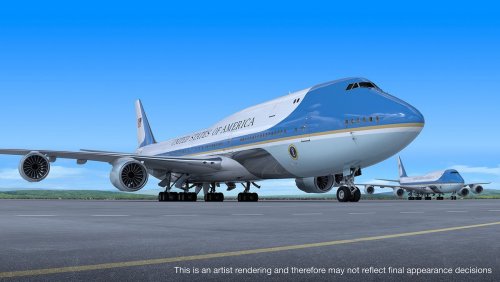Design engineers of the next Air Force One may have to go back to the drawing board after lawmakers on Tuesday expressed concern over the plane’s lack of mid-flight refueling capability.
Sen. Tom Cotton, a Republican from Arkansas, questioned Chairman of the Joint Chiefs of Staff Gen. Joseph Dunford why the Air Force, which is leading the effort, would choose not to have mid-air refueling on the future president’s plane, given the capability would be needed for a long flight in an event of a nuclear attack.
“Strangely to me, the Air Force has just announced that the next version of Air Force One will not have in-flight refueling capability. What do you make of that?” Cotton asked the general, who was testifying during a Senate Armed Services Committee hearing on his reappointment to the chairmanship and to uphold his rank.
“I think that was a decision that was not made by the — by the Air Force, but made by the White House, and I think it had to do with the fiscal constraints on the program,” Dunford said.
He added, “That will certainly be a limiting factor, and we’ll have to plan accordingly.”
The next Air Force One — or the Presidential Aircraft Recapitalization program, known as PAR — is not scheduled to have mid-air refueling, DefenseOne first reported earlier this month. Officials have argued that the capability, though useful, adds undue cost. Furthermore, presidents have never used the capability in flight; not even former President George W. Bush, whose aircraft loitered in the air for eight hours after the Sept. 11 attacks.
The latest comments on PAR come weeks after the Air Force awarded Boeing Co. the next contract — just shy of $600 million — for the program.
In August, the Air Force cemented a deal to buy two commercial 747-8 aircraft for the program from Boeing. The two planes were originally purchased by a now-defunct Russian airline company, Transaero, DefenseOne reported.
The service did not disclose the value of the planes at Boeing’s request because it could hurt potential 747 commercial sales in the future, the company said.
Boeing in January 2016 first began work on the new Air Force One for risk-reduction activities, signaling major progress on the program since the company won the contract in January 2015.
The next Air Force One entered the hot seat in December when then-president elect Donald Trump lambasted the program for being overpriced.
Trump on Dec. 6 tweeted “cancel order!” in reference to the Air Force One program. He brought up the issue again during a Dec. 16 speech in Pennsylvania.
“I don’t want a plane to fly around in that costs $4.2 billion, believe me … not going to happen … and I didn’t order it, please, remember this,” he said. “But we’re going to work with Boeing, we’re going to cut the price way down — way, way down.”
Boeing has so far received $170 million in development funding to study the technical requirements of the future Air Force One aircraft, the company has said.
Cotton on Tuesday reiterated that lawmakers and military leaders will have to revisit the refueling decision in the future.



